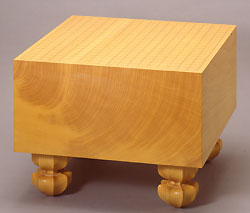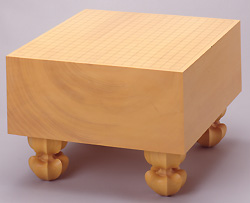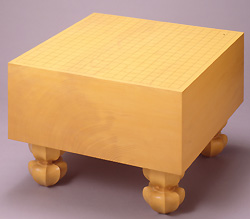| ◆ |
Straight-grain boards |
|
A kaya tree has to be hundreds of years old
before it can supply a block big enough to make a Go board with straight
or regular grain. The grain on the playing surface is straight and well-defined,
making a beautiful board. It's the most enjoyable kind to play on. Boards
in which the grain is straight from top to bottom on the sides, as well
as on the surface, is called tenchimasa. If the grain is straight only
on the playing surface, it's called tenmasa.
|
|
 |
 |
|
A tenmasa board |
The grain viewed from the side |
|
|
|
| ◆ |
Itame boards |
|
As mentioned above, there are two types. The
grain is either a 'U' pattern (called 'ki-ura') or an upside-down 'U' pattern
(called ki-omote).
|
|
|
|
Ki-ura board |
|
These boards have relatively few defects, making
them good boards to play on. |
|
 |
 |
|
A ki-ura board |
The grain viewed from the side |
|
|
|
|
Ki-omote boards |
|
The boards have the upside-down 'U' pattern.
The surface cracks easily; likewise, defects easily occur on the reverse
side. They are therefore ranked at the bottom, but actually they are also
enjoyable to play on. Their low prices often make them a bargain.
|
|
 |
 |
|
A ki-omote board |
The grain viewed from the side. |


